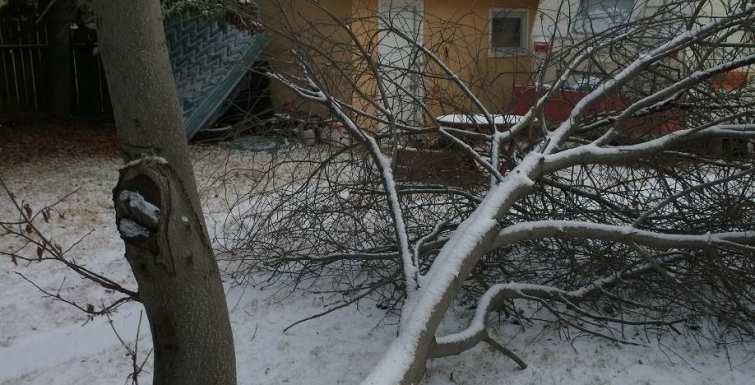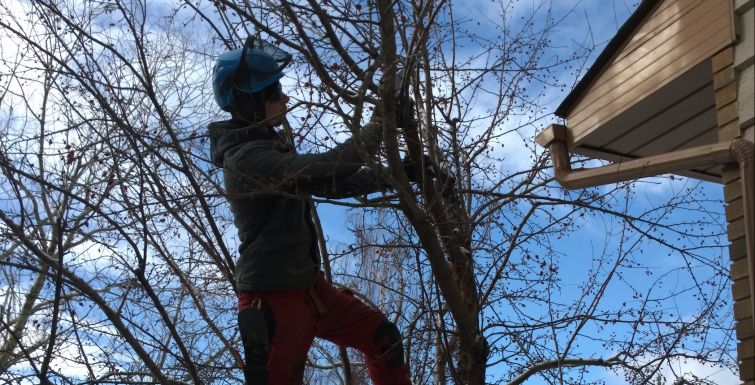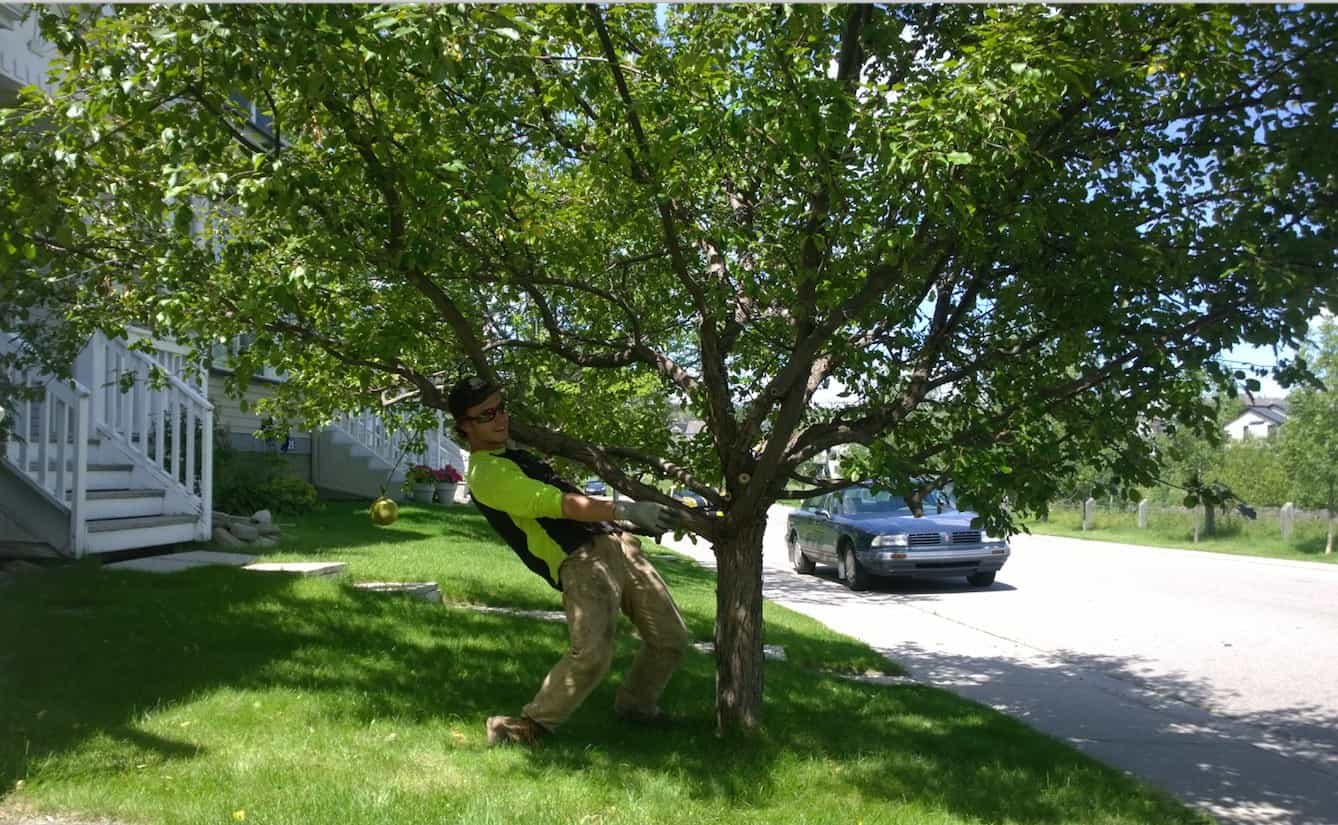Trees around the world are faced with the assault of mother natures weather events on a daily basis, in most cases if this occurs in a secluded forest the damage is unnoticed and has little impact on human activity. When storms and strong weather events hit cities however trees are definitely likely to be damaged and have an adverse effect on our daily lives such as the September 2014 snow storm in Calgary. The September snow event wasn’t the first time snow and leafed out trees collided in a bad way in the Calgary, in the early 2000’s there was a snowfall event in May that also caused significant damage to trees throughout the city and I wouldn’t be surprised if such an event occurs again.
Wind is another force of nature which has caused significant tree and property damage throughout Calgary in the past, damage caused ranging from minor twig breaks to complete tree failure. There is a lot that we can do as tree owners to prevent significant damage to trees and reduce the consequences of tree failure leading to property damage.
Firstly properly planting appropriate species in ideal locations is one of the best ways to avoid most conflicts caused by trees whether caused by storms or not. Planting a tree near an overhead wire for example is an extremely poor choice for a planting location or planting any species of tree within 10feet of a building should also be avoided. Have trees regularly inspected and pruned for structure especially young trees, Dr. Ed Gilman from the University of Florida has done extensive scientific research proving that structurally trained trees suffer significantly less damage than unbalanced or improperly pruned trees in severe weather. When a snow event repeats itself the best thing you can do is get the snow off of your trees and shrubs as quickly and safely as possible. You could brush or shake the snow off of smaller trees and shrubs but on larger trees you are putting yourself at risk if you attempt to go near the tree.
I learned from Wade Hartwell, the founder of Golden Acre Garden Centres, that using water is the best way to rid trees of snow and frost on trees and shrubs. Using a garden hose and pressure nozzle spray the branches from the tips inward to alleviate the weight at the end of the branches first, as the water melts off of the snow covered tree you will see the limbs bounce back up before your very eyes.



 Summer has so much to offer and so little time to give, so why not take advantage of the fact that you can work on trees and shrubs in the winter and save some of that precious summer time.
Summer has so much to offer and so little time to give, so why not take advantage of the fact that you can work on trees and shrubs in the winter and save some of that precious summer time.